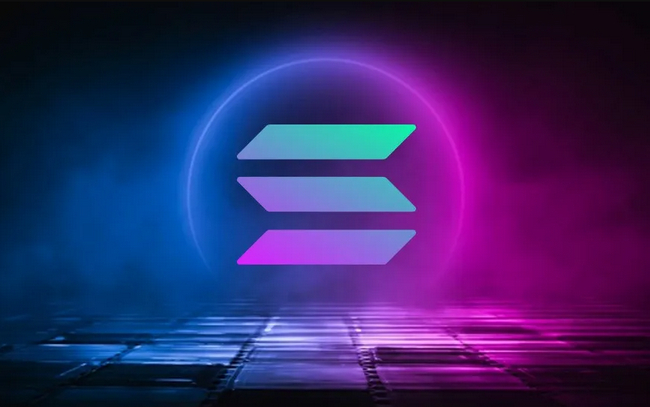-
 Bitcoin
Bitcoin $103,364.7267
-0.55% -
 Ethereum
Ethereum $2,588.3679
0.05% -
 Tether USDt
Tether USDt $1.0001
0.00% -
 XRP
XRP $2.5499
-0.41% -
 BNB
BNB $651.4058
-1.47% -
 Solana
Solana $175.6659
-0.73% -
 USDC
USDC $0.9999
-0.02% -
 Dogecoin
Dogecoin $0.2313
-2.83% -
 Cardano
Cardano $0.8024
-2.06% -
 TRON
TRON $0.2757
2.40% -
 Sui
Sui $3.8829
-3.34% -
 Chainlink
Chainlink $16.8858
-1.34% -
 Avalanche
Avalanche $25.2572
-0.04% -
 Stellar
Stellar $0.3041
-2.64% -
 Shiba Inu
Shiba Inu $0.0...01574
-1.56% -
 Hedera
Hedera $0.2055
-3.96% -
 Hyperliquid
Hyperliquid $25.4946
0.21% -
 Toncoin
Toncoin $3.2634
-2.77% -
 UNUS SED LEO
UNUS SED LEO $8.7984
1.87% -
 Bitcoin Cash
Bitcoin Cash $404.1974
-0.58% -
 Polkadot
Polkadot $5.0046
-1.98% -
 Litecoin
Litecoin $99.5082
-2.34% -
 Pi
Pi $1.0389
-13.38% -
 Monero
Monero $347.3057
2.29% -
 Pepe
Pepe $0.0...01374
-3.89% -
 Bitget Token
Bitget Token $4.7217
-1.42% -
 Dai
Dai $0.9999
-0.02% -
 Ethena USDe
Ethena USDe $1.0006
0.00% -
 Uniswap
Uniswap $6.6246
-4.65% -
 Bittensor
Bittensor $448.0909
-2.16%
solana how to burn tokens
Following the Solana token burn guide, developers can effectively remove tokens from circulation, influencing supply, scarcity, and tokenomics.
Nov 08, 2024 at 10:42 pm

Solana Token Burning: A Comprehensive Guide
Introduction
Token burning is a process in which a portion of a cryptocurrency's supply is permanently removed from circulation. This process can have several benefits, including:
- Reducing the total supply and increasing scarcity
- Deflationary pressure on token price
- Encouraging long-term holding
Solana, a high-performance blockchain platform, supports token burning for both SPL (Solana Program Library) tokens and native SOL tokens. In this guide, we will explore the process of token burning on Solana and provide step-by-step instructions for both types of tokens.
Steps for Burning SPL Tokens
Obtain the Token Contract Program ID:
To burn SPL tokens, you will need the contract program ID associated with the token. This can be found either through the token's official documentation or by using a token explorer such as Solana Beach.
Create a Burn Transaction:
Once you have the program ID, you can create a burn transaction using the Solana JSON RPC API. The transaction should include the following parameters:
programId: The contract program ID of the tokenaccounts: A list of accounts involved in the transaction, including the token account from which tokens will be burneddata: Transaction data, which includes the amount of tokens to burn
Send the Burn Transaction:
After creating the transaction, send it to the Solana network using the JSON RPC API. The transaction will be processed by the network, and the burned tokens will be permanently removed from circulation.
Steps for Burning SOL Tokens
Transfer SOL to a Token Burn Account:
To burn SOL tokens, transfer them to a token burn account. This account should be an unused account that has been created specifically for burning purposes.
Notify the Solana Foundation:
Once the SOL tokens have been transferred to the burn account, notify the Solana Foundation at burn@solana.com. Include the transaction ID of the transfer and the amount of SOL tokens burned.
Solana Foundation Processes the Burn:
The Solana Foundation will verify the transaction and process the burn. The burned SOL tokens will be permanently removed from the circulating supply.
Additional Considerations
- Irreversibility: Once tokens are burned, they cannot be recovered. Ensure that you are burning the correct amount of tokens and from the desired account.
- Network Fees: Both SPL and SOL token burns incur network fees. These fees will vary depending on network congestion.
- Tax Implications: Token burning may have tax implications in certain jurisdictions. It is essential to consult with a tax professional to determine the tax consequences in your specific situation.
- Tokenomics Impact: Token burning can significantly impact token economics, including supply, scarcity, and price dynamics. Consider the potential consequences carefully before executing a burn.
By following these steps, you can securely and effectively burn tokens on the Solana blockchain. Remember to consider the irreversibility, network fees, tax implications, and tokenomics impact before attempting a burn.
Disclaimer:info@kdj.com
The information provided is not trading advice. kdj.com does not assume any responsibility for any investments made based on the information provided in this article. Cryptocurrencies are highly volatile and it is highly recommended that you invest with caution after thorough research!
If you believe that the content used on this website infringes your copyright, please contact us immediately (info@kdj.com) and we will delete it promptly.
- Arctic Pablo Coin (APC) is the Next Big Meme Coin with Explosive Presale Potential
- 2025-05-15 00:25:13
- Bitcoin Solaris Enters Phase 3 of Its Public Token Presale, Prepares to Launch Nova App
- 2025-05-15 00:25:13
- XRP: Can the Momentum Continue Above Resistance?
- 2025-05-15 00:20:12
- The Sui blockchain SUI $3.65 2024-05-14
- 2025-05-15 00:20:12
- Tether Has Just Invested Nearly Half a Billion Dollars in Bitcoin to Launch a New Institutional Management Company
- 2025-05-15 00:15:13
- From Unlock to Utility: The Triggers Behind EIGENLayer Price Momentum
- 2025-05-15 00:15:13
Related knowledge

What is Ethereum’s Slashing mechanism and how to punish malicious behavior?
Feb 20,2025 at 03:08am
Key PointsOverview of slashingDifferent types of slashing in EthereumIncentives and consequences of slashingIdentifying and reporting slashed validatorsOngoing discussions and potential improvementsEthereum's Slashing Mechanism: Punishing Malicious BehaviorEthereum's slashing mechanism is an essential tool for ensuring network security and punishing mal...

What is the verifier node of Ethereum and how to become a verifier?
Feb 19,2025 at 06:00pm
The Verifier Node of Ethereum: A Comprehensive GuideKey Points:What is a Verifier Node?How to Become a Verifier NodeResponsibilities and Rewards of a Verifier NodeMinimum Requirements for Becoming a Verifier NodePotential Difficulties in Running a Verifier Node1. What is a Verifier Node?A Verifier Node is an independent entity on the Ethereum network th...

What is Ethereum’s staking, and how to participate and earn money?
Feb 19,2025 at 04:37pm
Key Points:Understanding Ethereum's Staking MechanismSteps to Participate in StakingBenefits and Rewards of StakingSecurity and Risk ConsiderationsTechnical Requirements and Hardware OptionsPotential Challenges and Troubleshooting TipsFAQs on Ethereum StakingWhat is Ethereum's Staking?Proof-of-Stake (PoS) is a consensus mechanism used in blockchain netw...

What is Ethereum’s DAO (Decentralized Autonomous Organization) and how does it work?
Feb 20,2025 at 03:12am
Key PointsDefinition and Structure of a DAOGovernance and Decision-Making in DAOsBenefits and Use Cases of DAOsChallenges and Limitations of DAOsWhat is Ethereum's DAO (Decentralized Autonomous Organization) and How Does It Work?Definition and Structure of a DAOA Decentralized Autonomous Organization (DAO) is an innovative governance and management fram...

What is Ethereum's multi-signature wallet and how to improve security?
Feb 20,2025 at 02:18pm
Key Points:Understanding the Concept of a Multi-Signature WalletBenefits and Drawbacks of Multisig WalletsRequirements for Setting Up a Multisig WalletStep-by-Step Guide to Generating a Multisig WalletImplementing Strategies for Enhanced Security1. Understanding the Concept of a Multi-Signature WalletA multi-signature (multisig) wallet in the Ethereum e...

What is Ethereum's oracle and how to provide data for smart contracts?
Feb 21,2025 at 01:30am
Key Points:Understanding the concept of oracles in EthereumExploring different types of oraclesDetailed guide on how to provide data for smart contractsAddressing potential challenges and considerationsWhat is Ethereum's Oracle?Oracles are crucial components in the Ethereum ecosystem, enabling smart contracts to access real-world data and off-chain even...

What is Ethereum’s Slashing mechanism and how to punish malicious behavior?
Feb 20,2025 at 03:08am
Key PointsOverview of slashingDifferent types of slashing in EthereumIncentives and consequences of slashingIdentifying and reporting slashed validatorsOngoing discussions and potential improvementsEthereum's Slashing Mechanism: Punishing Malicious BehaviorEthereum's slashing mechanism is an essential tool for ensuring network security and punishing mal...

What is the verifier node of Ethereum and how to become a verifier?
Feb 19,2025 at 06:00pm
The Verifier Node of Ethereum: A Comprehensive GuideKey Points:What is a Verifier Node?How to Become a Verifier NodeResponsibilities and Rewards of a Verifier NodeMinimum Requirements for Becoming a Verifier NodePotential Difficulties in Running a Verifier Node1. What is a Verifier Node?A Verifier Node is an independent entity on the Ethereum network th...

What is Ethereum’s staking, and how to participate and earn money?
Feb 19,2025 at 04:37pm
Key Points:Understanding Ethereum's Staking MechanismSteps to Participate in StakingBenefits and Rewards of StakingSecurity and Risk ConsiderationsTechnical Requirements and Hardware OptionsPotential Challenges and Troubleshooting TipsFAQs on Ethereum StakingWhat is Ethereum's Staking?Proof-of-Stake (PoS) is a consensus mechanism used in blockchain netw...

What is Ethereum’s DAO (Decentralized Autonomous Organization) and how does it work?
Feb 20,2025 at 03:12am
Key PointsDefinition and Structure of a DAOGovernance and Decision-Making in DAOsBenefits and Use Cases of DAOsChallenges and Limitations of DAOsWhat is Ethereum's DAO (Decentralized Autonomous Organization) and How Does It Work?Definition and Structure of a DAOA Decentralized Autonomous Organization (DAO) is an innovative governance and management fram...

What is Ethereum's multi-signature wallet and how to improve security?
Feb 20,2025 at 02:18pm
Key Points:Understanding the Concept of a Multi-Signature WalletBenefits and Drawbacks of Multisig WalletsRequirements for Setting Up a Multisig WalletStep-by-Step Guide to Generating a Multisig WalletImplementing Strategies for Enhanced Security1. Understanding the Concept of a Multi-Signature WalletA multi-signature (multisig) wallet in the Ethereum e...

What is Ethereum's oracle and how to provide data for smart contracts?
Feb 21,2025 at 01:30am
Key Points:Understanding the concept of oracles in EthereumExploring different types of oraclesDetailed guide on how to provide data for smart contractsAddressing potential challenges and considerationsWhat is Ethereum's Oracle?Oracles are crucial components in the Ethereum ecosystem, enabling smart contracts to access real-world data and off-chain even...
See all articles





















![[Market 5.13] BTC continues to play music and dance? #btc #ETH #sol #doge [Market 5.13] BTC continues to play music and dance? #btc #ETH #sol #doge](/uploads/2025/05/14/cryptocurrencies-news/videos/market-btc-continues-play-music-dance-btc-eth-sol-doge/image_500_375.webp)




![[Ronnie Trading Guide]-2025.5.14-Notice: Bitcoin will test the previous high soon~ wait and see~ [Ronnie Trading Guide]-2025.5.14-Notice: Bitcoin will test the previous high soon~ wait and see~](/uploads/2025/05/14/cryptocurrencies-news/videos/ronnie-trading-guidenotice-bitcoin-test-previous-wait/image_500_375.webp)





























































